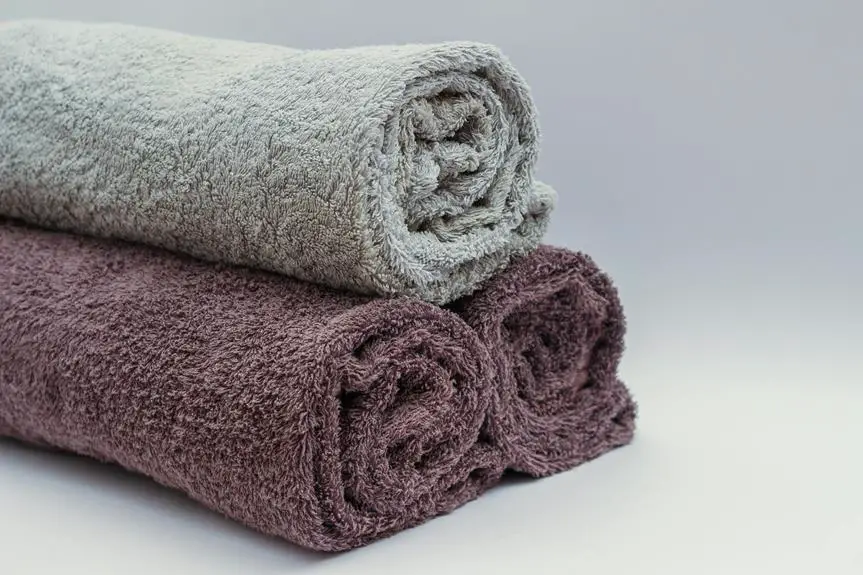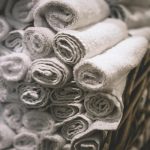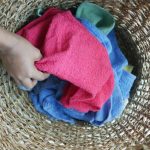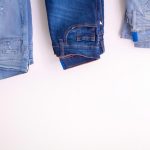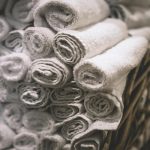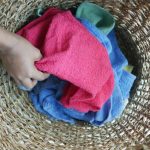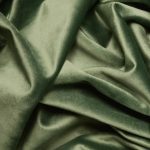When you consider absorbency in fabrics, you might find yourself wondering how Waffle Terry measures up against Regular Terry. While Waffle Terry boasts a unique grid-like structure that enhances moisture trapping, Regular Terry offers incredible softness and a different absorbency profile. You're likely to appreciate the distinct functionalities of each, but the real question is how these features translate into their practical application. As you explore the strengths and weaknesses of both, you'll uncover insights that can influence your choices in fabric suitability for various needs.
Table of Contents
Overview of Waffle Terry
Waffle Terry's unique texture, characterized by its raised, grid-like pattern, makes it a popular choice for casual and cozy apparel. This distinct weave not only gives it a stylish appearance but also enhances its functionality.
You'll find that Waffle Terry is lightweight and breathable, which keeps you comfortable during various activities, whether you're lounging at home or out for a leisurely walk.
The structure of Waffle Terry allows for improved insulation, meaning you can stay warm without feeling weighed down. It's perfect for layering, lets you dress up or down, and adds an interesting visual element to your wardrobe.
Plus, the fabric's texture gives it a bit of stretch, which provides flexibility and movement.
When choosing Waffle Terry, you'll likely appreciate how easy it's to care for. Most Waffle Terry items are machine washable, making maintenance a breeze.
The durability of the fabric ensures it holds up well to regular wash and wear, so you can enjoy your favorite pieces season after season.
With its blend of style and practicality, you'll find Waffle Terry to be an essential addition to your casual collection.
Overview of Regular Terry
Regular Terry is known for its soft texture and classic fabric composition, often made from cotton or blends.
You'll appreciate its excellent absorbency, making it a popular choice for towels and bathrobes.
Let's explore its common uses and applications to see why it remains a staple in many households.
Fabric Composition Details
Terry fabric typically consists of cotton or a cotton-blend, providing a soft, absorbent texture perfect for towels and loungewear.
This fabric is known for its looped pile on one or both sides, which creates small pockets that can trap moisture, enhancing its absorbent qualities.
When you feel a towel or bathrobe made from regular terry, you'll notice it's plush and cozy against your skin.
Regular terry comes in different weights and thicknesses, allowing you to select the ideal fabric for your needs.
Lighter weights are great for quick-drying beach towels, while heavier weights are perfect for plush bath towels.
If you're after durability, look for terry fabric that includes a percentage of polyester. This blend maintains the soft touch of cotton while improving its resistance to wear and tear.
You'll also find variations like combed or ring-spun cotton, which add to the softness and smoothness of the fabric.
These qualities make regular terry a popular choice for not just towels, but also for robes, pajamas, and other cozy apparel.
Absorbency Characteristics Explained
When choosing fabrics for absorbency, you'll find that regular terry excels due to its looped pile structure, which captures water effectively. This unique design significantly enhances its ability to absorb moisture, making it a go-to choice in various scenarios.
Regular terry is distinguished by three key absorbency characteristics.
Looped Pile: The loops create more surface area, allowing the fabric to trap water and hold it efficiently. This makes regular terry particularly effective for drying off or soaking up spills.
Thickness: Regular terry is often thicker than many other fabrics, contributing to its absorbent qualities. The more substance the fabric has, the more water it can retain without feeling saturated.
Speed of Absorption: Regular terry fabrics can often absorb water faster than single-layered or flat fabrics. This rapid absorption helps prevent drips or leaks, making it ideal for active use in showers or kitchens.
Common Uses and Applications
You'll find that terry cloth is widely used in various settings, from bath towels to sportswear, due to its excellent absorbency and comfort. Regular terry cloth, with its looped texture, makes it ideal for a variety of applications where moisture absorption is key.
| Application | Characteristics | Benefits |
|---|---|---|
| Bath Towels | Thick, plush loops | Soft, quick-drying |
| Sportswear | Lightweight, stretch | Breathable, moisture-wicking |
| Baby Products | Gentle, hypoallergenic | Safe against sensitive skin |
| Kitchen Towels | Durable, absorbent | Efficient cleaning |
You typically see regular terry used in bath towels, providing that cozy feel after a shower. Athletes appreciate it in sportswear, as it wicks away sweat efficiently. For baby items, its gentle fabric is a go-to choice, ensuring comfort for sensitive skin. In kitchens, regular terry cloth towels offer durability and absorbency, making them perfect for drying hands and dishes. Overall, its versatility makes regular terry a staple in many households, enhancing everyday experiences.
Structure and Weaving Techniques
Waffle and regular terry fabrics serve practical purposes, but their distinct structures and weaving techniques set them apart in terms of texture and absorbency.
Waffle fabric features a unique grid-like pattern created through its specific weaving method, resulting in raised squares that give it a highly textured surface.
The main differences in their structures can be seen in three key areas.
Loop Formation
Regular terry fabric is made by weaving loops throughout the material, providing a soft, plush feel. Waffle fabric, on the other hand, has fewer loops but forms more air pockets due to its woven design.
Thickness
Regular terry is generally thicker and denser, making it a bit heavier. Waffle fabric is typically lighter and more breathable because of its flat, open weave.
Flexibility
The waffle structure allows for increased flexibility and stretch. Regular terry is often less flexible due to its dense loop construction.
Each fabric serves its purpose well, but understanding these structural differences can help you choose the right one for your needs.
Absorbency Performance Comparison
Comparing the absorbency performance of waffle and regular terry fabrics reveals significant differences that influence their practical applications. Waffle terry, with its unique grid pattern, boasts a larger surface area than traditional terry cloth, which enhances its ability to trap moisture. You'll find that this structure allows it to absorb water more quickly, making it ideal for towels and bathrobes.
On the other hand, regular terry fabric, characterized by its loops, provides a plush feel and excellent absorbency, but it can be somewhat slower to wick away moisture compared to waffle terry. When you reach for a regular terry towel after a shower, it'll still get the job done, offering comfort and softness. However, if you need something that dries faster or absorbs moisture at a quicker rate, waffle terry tends to outperform.
In practical terms, if you're looking for a fabric that excels in swift drying and absorbency, waffle terry should be your go-to. But if comfort and a softer texture are your priority, regular terry cloth remains a solid choice. Ultimately, your needs will dictate which option best suits your lifestyle.
Additional Benefits of Each Fabric
When choosing between waffle terry and regular terry, it's essential to consider the unique benefits each fabric offers.
Waffle terry provides excellent breathability and texture.
Regular terry boasts a soft, plush feel.
Understanding these advantages helps you make the best choice for your needs.
Waffle Terry Advantages
Waffle Terry offers unique advantages, including enhanced breathability and quick-drying properties that make it perfect for active wear. If you're considering integrating this fabric into your wardrobe, you'll appreciate its distinct benefits.
1. Lightweight Comfort: Waffle Terry is lighter compared to regular terry fabrics, making it an ideal choice for layering without feeling bulky. This means you can stay comfortable while maintaining a stylish look.
2. Moisture Management: Its unique, textured surface allows for better airflow, which helps wick moisture away from your skin. This keeps you dry and comfortable during workouts or hot summer days.
3. Versatile Use: Beyond towels and robes, Waffle Terry is great for loungewear and sleepwear. You'll find it's perfect for everything from casual home outfits to beach cover-ups.
Regular Terry Benefits
Regular Terry excels in providing unmatched softness and absorbency, making it a popular choice for cozy towels and plush robes. When you wrap yourself in a Regular Terry towel, you'll immediately feel that luxurious plushness against your skin. This fabric's looped texture enhances its absorbent qualities, allowing it to soak up water efficiently, leaving you dry and comfortable.
In addition to absorbency, Regular Terry is very durable. It withstands frequent washing, ensuring that your items maintain their softness and stay looking fresh for a long time. Plus, the fabric is generally less prone to fading and wear compared to other materials, making it a worthwhile investment.
Another benefit is its versatility. Regular Terry is suitable for a variety of products, from bath towels to activewear. If you need a fabric that combines comfort and practicality, this is a solid option.
Lastly, Regular Terry is easy to care for. You can toss it in the washing machine without hassle, and it dries quickly, so you won't be left waiting around. Overall, Regular Terry is a reliable choice that balances comfort, durability, and ease of maintenance.
Best Use Cases for Each Type
Choosing between waffle terry and regular terry depends largely on your specific needs and preferences in terms of comfort and functionality. Each has its strengths, making them suited for different use cases.
- Waffle Terry: If you're looking for lightweight, breathable options ideal for warmer weather, waffle terry is perfect. Its unique texture allows air circulation, making it great for beach towels or lightweight bathrobes.
- Regular Terry: Opt for regular terry when maximum absorbency is your priority. It's the go-to choice for bath towels or spa wraps, providing a plush feel that quickly soaks up moisture.
- Versatile Options: For situations requiring a balance between weight and absorbency, such as gym towels or travel towels, you might consider a blend of both fabrics. This'll allow you to enjoy the benefits of both types without compromising on practicality.
Frequently Asked Questions
Can I Use Waffle Terry for Heavy-Duty Cleaning Tasks?
Yes, you can use waffle terry for heavy-duty cleaning tasks. Its textured surface enhances scrubbing power, making it effective for tough jobs. Just be sure it's compatible with the surfaces you're cleaning to avoid damage.
Is Regular Terry More Durable Than Waffle Terry?
You're right to consider durability. Regular terry often offers greater longevity due to its tighter weave, making it sturdier for repeated use. Waffle terry's unique texture can be less resilient under heavy wear conditions.
How Do Washing and Drying Affect Both Fabrics?
When you wash and dry both fabrics, you'll notice they can shrink or lose softness. To maintain their quality, use gentle cycles and low heat settings, ensuring they stay comfortable and last longer for future use.
Are There Hypoallergenic Options Available for Each Type?
Yes, you can find hypoallergenic options for both waffle terry and regular terry. These fabrics often undergo treatments to reduce allergens, making them suitable for sensitive skin without sacrificing comfort or absorbency.
Can Waffle Terry Be Used for Baby Products?
Absolutely, you can use waffle terry for baby products. Its unique texture offers softness and breathability, making it comfortable against delicate skin. Just ensure it's made from safe, non-toxic materials for your little one's safety.
- How Does Ring Spun Cotton Affect Garment Fit and Shape Retention? - August 13, 2024
- What Are the Challenges in Producing Ring Spun Cotton? - August 13, 2024
- Is Ring Spun Cotton Suitable for Plus-Size Clothing? - August 13, 2024

